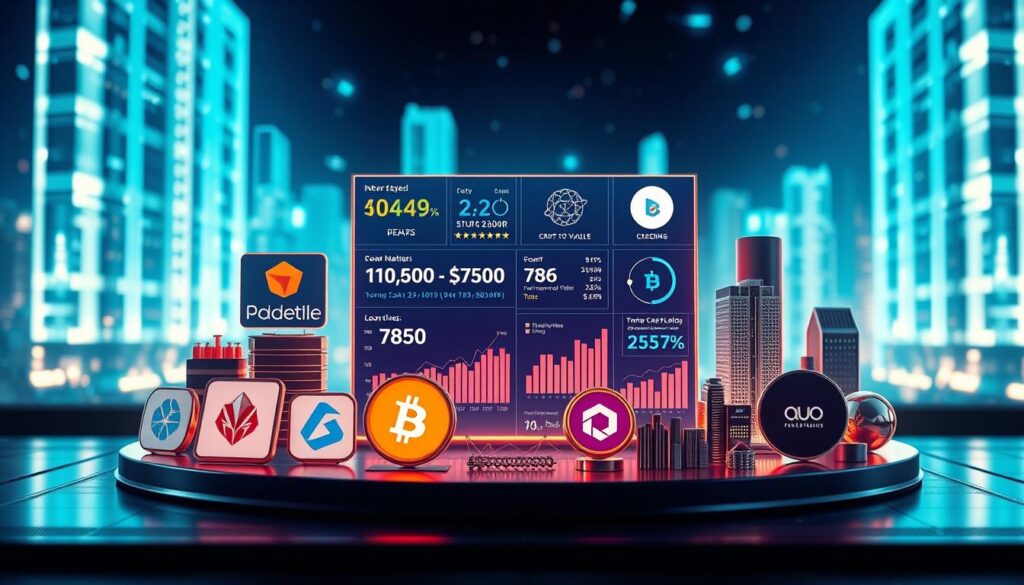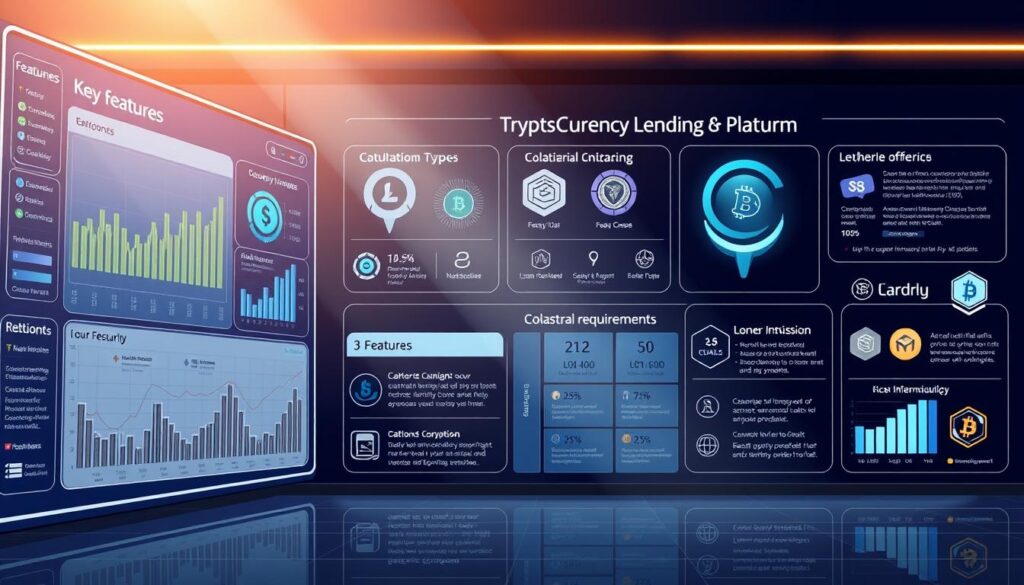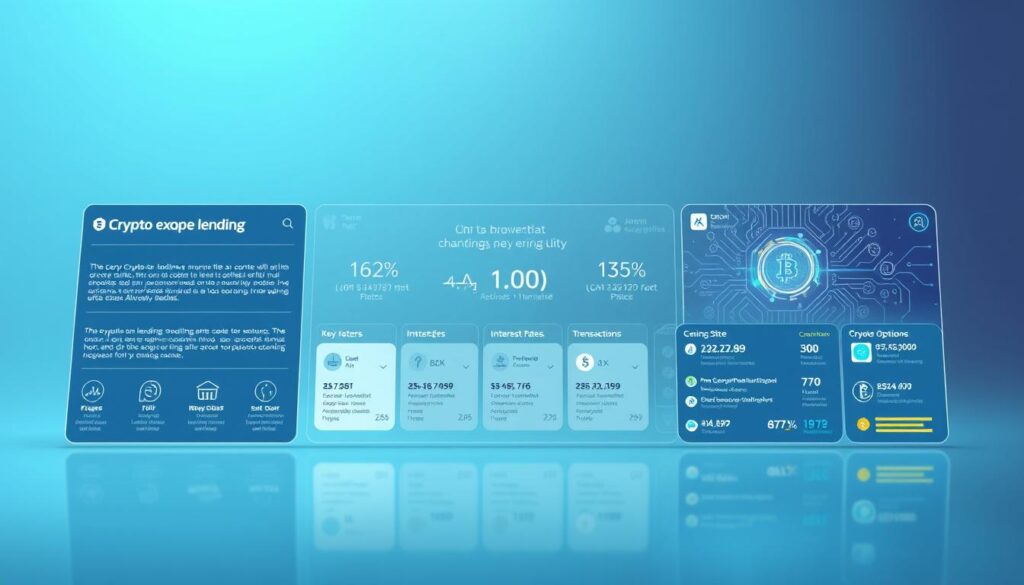Now Reading: Compare Cryptocurrency Lending Borrowing Interest Rates
- 01
Compare Cryptocurrency Lending Borrowing Interest Rates
Compare Cryptocurrency Lending Borrowing Interest Rates

The digital asset landscape has evolved dramatically. What was once a niche activity is now a mainstream financial opportunity. Savvy investors are constantly seeking ways to make their holdings work for them.
Not all opportunities are created equal. The returns you can earn vary significantly across different services. This makes a thorough comparison of crypto lending rates absolutely essential for maximizing your potential earnings.
Platforms like Aave V3, Morpho V1, and SparkLend offer different annual percentage yields (APY). These percentages can range from very low to exceptionally high. The best crypto yields depend on the asset, platform type, and current market dynamics.
This guide will help you navigate this complex environment. You will learn how to evaluate different platforms and understand their unique structures. We will also cover how to assess risks to make informed decisions about your portfolio.
Key Takeaways
- Comparing yields across platforms is crucial for maximizing returns on digital assets.
- The digital asset ecosystem offers both decentralized (DeFi) and centralized (CeFi) options.
- Annual Percentage Yields (APY) can vary dramatically, from under 1% to over 60%.
- Returns are dynamic and change based on supply, demand, and market volatility.
- Regular comparison is necessary for optimal portfolio management.
- This information benefits both experienced investors and newcomers to the space.
Understanding Cryptocurrency Lending Borrowing Interest Rates
Modern crypto services allow holders to put their digital wealth to productive use. This financial innovation creates opportunities beyond simple buying and holding strategies.
The ecosystem offers two main pathways for participants. Each approach has distinct characteristics and operational models.
What Are Crypto Lending and Borrowing?
This service enables asset owners to earn passive income on their holdings. They deposit digital funds into platforms that pay regular returns.
Borrowers can access liquidity without selling their crypto positions. They use existing assets as security for obtaining loans.
The system operates through centralized companies or decentralized protocols. Both methods facilitate transactions between different market participants.
How Interest Rates Are Determined
Platforms use different mechanisms to set compensation levels. Supply and demand dynamics play a crucial role in this process.
Decentralized systems employ algorithmic formulas that adjust automatically. These respond to real-time market conditions and utilization metrics.
Centralized services establish more stable pricing structures. Companies consider operational costs and competitive factors when determining their offers.
Collateral requirements help manage risk for all parties involved. This protection mechanism ensures system stability during market fluctuations.
Comparing Top Crypto Lending Platforms
The competitive landscape for earning yields on digital holdings features distinct approaches with varying advantages. Understanding these differences helps investors select the optimal service for their needs.

DeFi Lending Protocols Overview
Decentralized protocols dominate the space with innovative structures. Aave V3 leads with over $63.5 billion in supplied assets across multiple blockchains.
Morpho V1 offers a peer-to-peer model with $12 billion in total value. This approach often provides better returns by matching participants directly.
SparkLend integrates with MakerDAO’s ecosystem, focusing on competitive stablecoin offerings. Current data shows significant variation in annual percentage yields.
CeFi Lending Platforms in Focus
Centralized services like Nexo provide regulated options with insurance coverage. Founded in 2018, they offer flexible withdrawal options for users.
Ledn emphasizes transparency through regular Proof of Reserves audits. The platform has facilitated over $9 billion in loans since its launch.
These established companies often appeal to investors seeking traditional financial safeguards. Their compensation structures tend to be more stable than decentralized alternatives.
DeFi vs. CeFi: Evaluating Lending Rates and Risks
Trust mechanisms form the critical distinction between decentralized and centralized crypto platforms. Each approach carries unique advantages and vulnerabilities that directly affect user security.

Understanding these fundamental differences helps investors make informed decisions about where to place their assets.
Risk and Trust Considerations
Decentralized services operate through smart contracts without human intermediaries. This eliminates company risk but introduces technical vulnerabilities.
Code exploits and oracle failures have caused significant losses in the past. Centralized options require trusting a company’s management and financial stability.
The 2022 market collapse revealed serious issues with major CeFi services. Several prominent platforms faced insolvency, leaving users unable to access funds.
Impact of Volatility on Lending and Borrowing
Price fluctuations create different challenges across platform types. DeFi protocols use automated systems that respond instantly to market movements.
Borrowers using volatile assets as collateral face rapid liquidation risks. Loan-to-value ratios must be constantly monitored to avoid position closures.
Centralized services often provide more stable compensation structures. They can also offer traditional financial products like fiat currency loans secured by digital assets.
Each model serves different investor needs based on risk tolerance and desired features.
Platform Features, Fees, and Collateral Requirements
Fee structures and collateral requirements form the backbone of any successful digital asset service platform. These elements determine both profitability and security for all participants.

Each service employs distinct economic models. Understanding these differences helps users make informed decisions.
Unique Features and Governance Models
Platform tokens like AAVE and COMP grant voting rights on key decisions. Holders can influence fee structures and risk parameters.
Some services offer staking rewards around 5-7% APY. Special features include Aave’s flash loans and Morpho’s peer-to-peer matching.
Fee Structures and Collateralization Essentials
Most protocols charge spreads between 10-20% on earnings. These fees support platform operations and token holders.
Collateral ratios typically require 150% or higher value. This means borrowing $100 might need $150 in locked assets.
Liquidity and Withdrawal Conditions
Withdrawal terms vary significantly across services. DeFi platforms often provide instant access to funds.
Centralized options may offer flexible arrangements. Some provide credit cards linked to digital holdings through a crypto-backed loan program.
| Platform | Fee Structure | Collateral Ratio | Unique Feature |
|---|---|---|---|
| Aave | 10-20% spread + 0.09% flash loans | 150%+ | Flash loans, multi-chain |
| Sky Protocol | 1-5% stability fee | 150%+ | USDS stablecoin |
| Compound | ~10% interest spread | 150%+ | Reserve-based fees |
| Morpho | Small P2P spread | 150%+ | Peer-to-peer matching |
| Nexo | Variable based on tier | Varies | Credit card integration |
Factors to Consider When Choosing a Crypto Lending Platform
Investors face important decisions when selecting where to place their crypto holdings. Several factors beyond advertised returns deserve careful attention.

User Access and Global Reach
Accessibility varies significantly between service types. DeFi options typically require no identity verification, offering permissionless entry.
Anyone with internet and a digital wallet can participate globally. Centralized platforms often impose geographic restrictions and thorough KYC checks.
Customer support differs dramatically between models. Automated protocols rely on community forums, while traditional services provide human assistance.
Market Trends and Future Outlook
The digital asset space evolves rapidly. Regulatory developments and institutional adoption continuously reshape the landscape.
Smart contract security improvements may reduce technical risks over time. Integration with traditional finance creates new opportunities.
Regular monitoring remains essential as conditions change frequently. Diversification across multiple services helps manage exposure.
| Platform Type | Verification Required | Global Access | Support Quality |
|---|---|---|---|
| DeFi Protocols | Typically None | Universal | Community-Based |
| Centralized Services | KYC Mandatory | Geographically Limited | Dedicated Teams |
| Hybrid Models | Partial KYC | Select Regions | Mixed Support |
Each investor should assess their comfort level with different approaches. Consider your technical expertise and risk tolerance carefully.
Conclusion
Selecting the right platform for your digital assets involves balancing reward potential with security concerns. The best crypto lending opportunities require understanding both platform features and personal financial circumstances.
Thorough due diligence remains essential before committing funds. Review security audits, fee structures, and collateral requirements carefully. Historical performance does not guarantee future returns in this dynamic market.
Effective risk management includes diversifying across multiple services and maintaining appropriate collateral ratios. Consider your investment horizon and liquidity needs rather than chasing the highest advertised rates.
Remember that APR estimates are rough projections that adjust daily. Digital asset values can fluctuate significantly. Consult independent financial advisors and understand that you bear sole responsibility for investment decisions.
FAQ
What are the main types of crypto lending platforms?
There are two primary categories: CeFi (Centralized Finance) platforms like BlockFi and Nexo, and DeFi (Decentralized Finance) protocols such as Aave and Compound. CeFi platforms act as intermediaries, while DeFi protocols use smart contracts for peer-to-peer transactions.
How do I earn interest on my digital assets?
You can deposit your coins like Bitcoin or Ethereum on a platform. The service then lends these assets to borrowers. You receive a return, typically paid out in the same coin or a stablecoin, based on the platform’s offered APY (Annual Percentage Yield).
What factors influence the APY I can earn?
The rate depends on the specific asset, market demand for borrowing it, the platform you use, and the term of your deposit. Generally, less common altcoins or stablecoins might offer higher rewards to attract liquidity.
What is a collateralization ratio, and why is it important?
This ratio is the value of the collateral you must lock up compared to the loan amount you receive. It’s a key safety feature for the lender. A higher ratio, like 150%, protects against market swings that could lower your collateral’s value.
Are there significant risks involved with these services?
Yes. Key dangers include platform insolvency, smart contract bugs in DeFi, extreme market volatility affecting your collateral, and potential regulatory changes. It’s vital to research a platform’s security measures and insurance policies.
Can I get a loan using my crypto without selling it?
Absolutely. This is a major benefit. You can use your holdings as collateral to secure a fiat currency or stablecoin loan. This gives you access to cash while allowing your original assets to remain in the market.
How do borrowing costs compare between platforms?
Costs vary widely. DeFi protocols might have lower fees but require technical knowledge. CeFi platforms often provide a simpler user experience but may have different fee structures. Always check the annual percentage rate (APR) and any origination fees.











